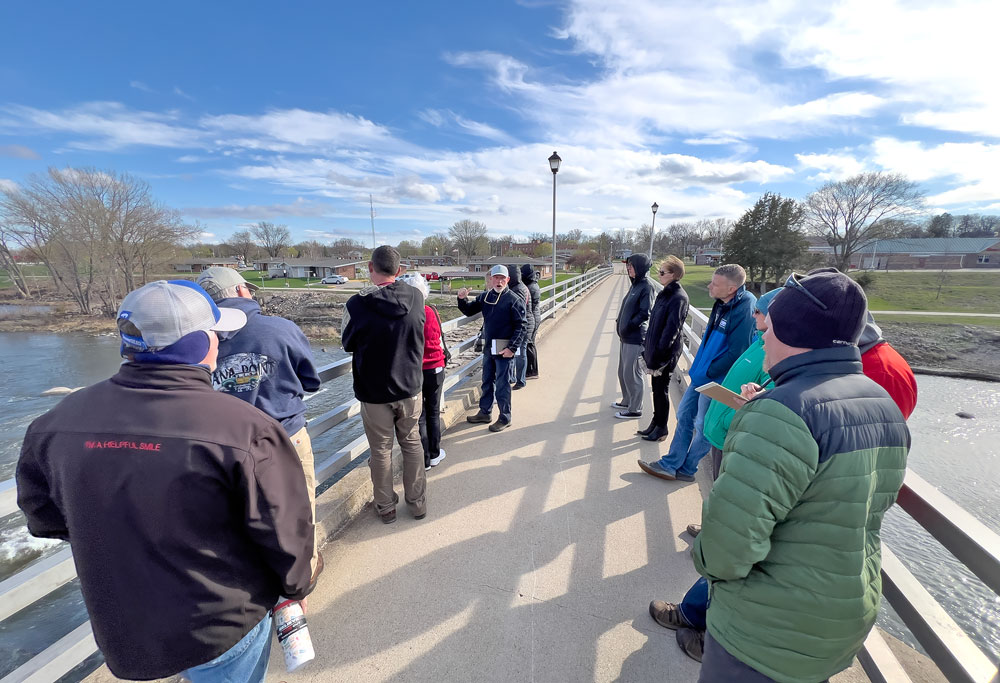Could Iowa have a state fossil?

By Thomas Nelson, tnelson@charlescitypress.com
Most people are familiar with state birds (Iowa’s is the American Goldfinch) and state flowers (Iowa’s is the Rosa arkansana). But what about a state fossil?
The Crinoid is an ancient animal that can still be found in the oceans and can be currently in fossil form around Iowa.
It was around back when Iowa was at the bottom of an ocean long ago.
Those fossils can be found in the Cedar River and at the Fossil and Prairie Park in Floyd County.
“Having a state fossil is a good thing that brings recognition to the history of the state,” said Floyd County Conservation Naturalist Heidi Reams.
The fossil has been proposed to be Iowa’s state fossil in the Iowa Senate.
Sen. Bill Dotzler (D-Waterloo) is one of the legislators spearheading this initiative.
“Around here trying to create a state anything is difficult,” Dotzler said. “I know guys that have been working on state catfish forever and never go there.”
Expectations for an Iowa State Fossil are low as efforts to establish even a state butterfly have failed in previous years.
“I think what really stimulate it was Iowa was at one time an ancient ocean and below us, we have a huge foundation of limestone in it there’s a variety of different fossils,” Dotzler said. “Crinoids are one of the most interesting of all.”
Crinoids are considered alien compared to the rest of fossils found in ancient oceans.
“I think because of their uniqueness it would interest the young people in studying fossils and studying Iowa’s history,” Dotzler said. “Crinoids look like a plant or a flower, in fact, some people call them sea lilies.”
Despite the nickname of sea lilies, Crinoids are animals, not plants.
“They have a whole variety of weird characteristics,” Dotzler said. “They don’t really have a stomach, but they feed non-stop through their arms.”
Crinoids can lose their arms and grow new ones, but only in groups of five, Dotzler said.
“They are considered living fossils,” Dotzler said. “We do have some of their cousins that are alive today in our oceans.”
Crinoids have survived several extinction periods, while at the same time appearing in some of the oldest fossils found on the record.
The fossils are “anywhere between 350 million years old and 500 million years old,” Dotzler said.
The primary purpose of having a state fossil is to educate Iowa’s students, Dotzler said.
“Getting them excited and interested one of the most strangest early fossils ever,” Dotzler said. “It certainly is something that is definitely strange.”
Crinoid fossils are all around Iowa.
“I found some myself on a recent canoe trip this summer on the Cedar River in Waterloo,” Dotzler said. “If kids get out there looking, there’s a whole variety of fossils that can be found, and some of them have some value.”
Dotzler doesn’t have a lot of hope that the idea of a state fossil will make it through the Iowa Senate and see the governor’s desk.
“I think even having a discussion about it is a positive thing,” Dotzler said. “A lot of times these things take several years for people to get excited about it.”







Social Share